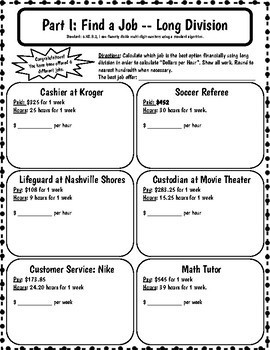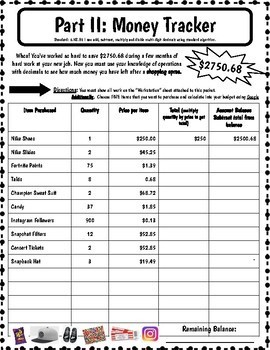6th Grade MATH End of Year Summative Project + Distance Learning
- PDF
What educators are saying
Description
Please see my 7th Grade Math End of Year Summative Project (Over 100 Sold)
7th Grade Bell Ringers (Discounted)
Geometric Dream House Project!
Over 500 sold!
*This is a GREAT tool for Summer School as it touches all standards as well**
After Testing is finished, your students don't want to work on worksheets or regular skill and drill. Instead, they want to be empowered with the opportunity to apply their knowledge in the real world with a fun and engaging multi-day project!
This is a 10 part project that requires little teacher involvement. Students can work in groups or complete individually. This 10 part project includes *every* standard possible in a culturally responsive curriculum that is aligned to Common Core Standards for 6th Grade Mathematics.
This Is a wonderful wrap up to 6th grade material, OR can be used as enrichment of 5th grade standards OR as a remedial activity for 7th grade mathematics.
Part I: Find a Job (Long Division)
Standard: 6.NS.B.2, I can fluently divide multi-digit numbers using a standard algorithm.
Part II: Money Tracker
Standard: 6.NS.B3 I can add, subtract, multiply and divide multi-digit decimals using standard algorithm
Part III: GCF and LCM
Standard: 6.NS.B.4: I can find the greatest common factor of two whole numbers less than or equal to 100 and the least common multiple of two whole numbers less than or equal to 12.
Part IV: Division of Fractions
Standard: 6.NS.1: I can interpret and compute quotients of fractions, and solve contextual problems involving division of fractions by fractions.
Part V: Ratios and Ratio Language
Standard: 6.RP.A.1: Understand the concept of a ratio and use ratio language to describe a ratio relationship between two quantities.
Part VI: Unit Rate and Better Buy
Part VII: Altitude adjustment (Number Sense)
Standard: 6.NS.C.5: Understand that positive and negative numbers are used to describe quantities having opposite directions or values.
Part VIII: How Coordinated are you?
Standard: 6.NS.C.6” Understand a rational number as a point on the number line. I can recognize opposite signs of numbers as indicating locations on opposite sides of 0 on the number line; understand signs of numbers in ordered pairs as indicating locations in quadrants of the coordinate plane.
Part IX: Solving Equations
One Step Equations
Part X: Student Elections Sampling and Data
Standard: 6.SP.1-4





